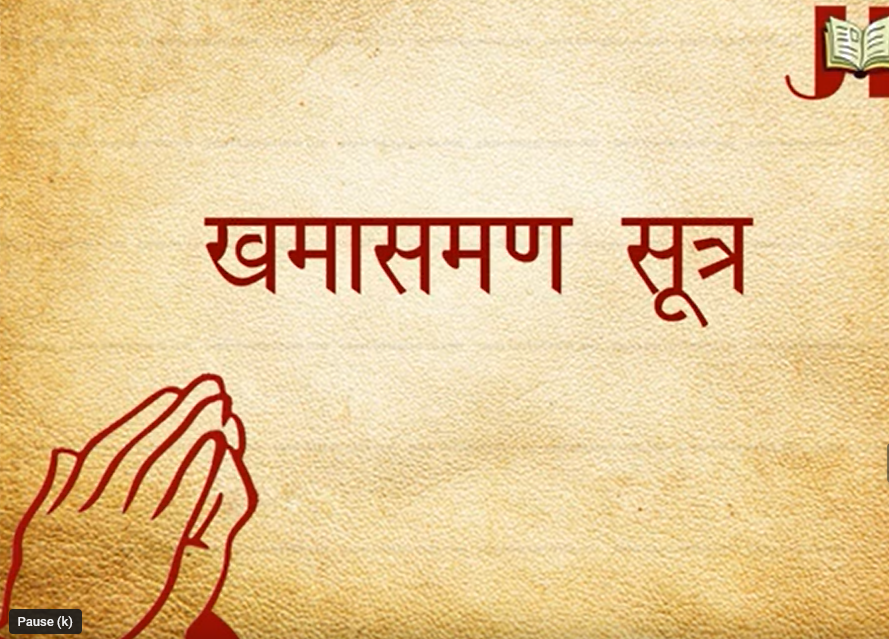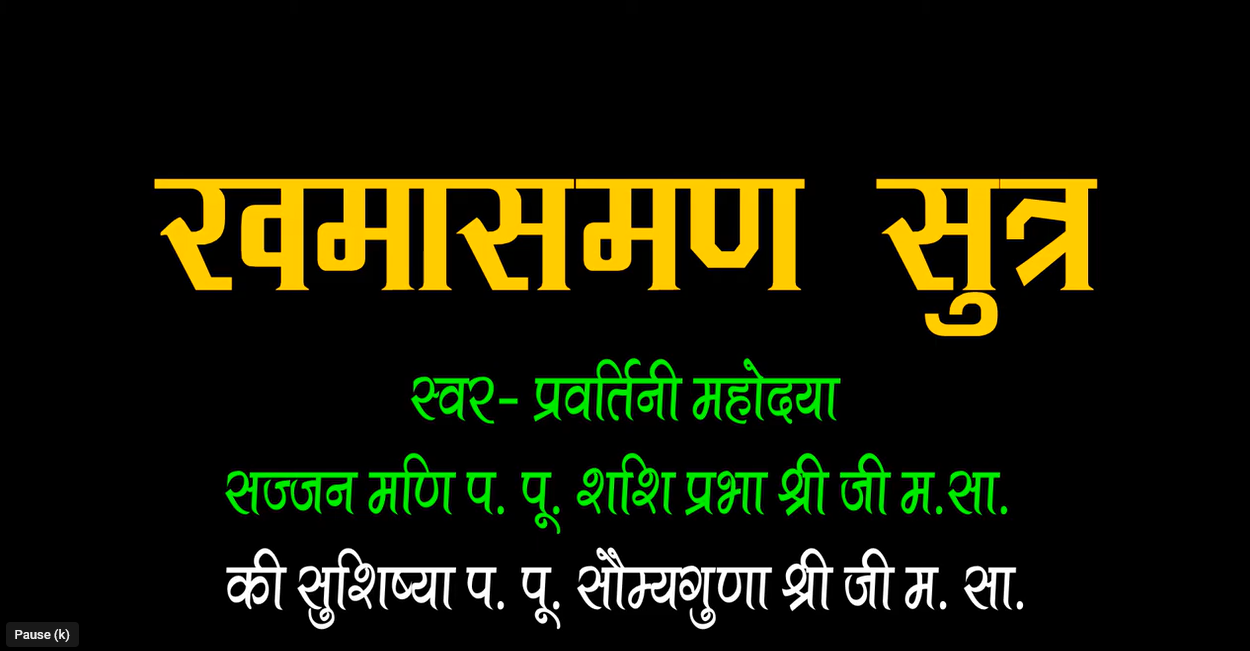Nanammi dansanammi a, charanammi tavammi taha yaviriyammi;
Ayaranam ayaro, ia eso panchaha bhanio. 1
Kale vinae bahu-mane, uvahane-taha a-ninhavane;
Vanjanaattha-tadubhae, attha viho nanamayaro. 2
Nissankia nikkankhia, nivvitigichchha a-mudha-ditthia;
Uvavuha-thirikarane, vachchhalla ppabhavane attha. 3
Panihana joga jutto, panchahim samihim tihim guttihim;
Esa charitta yaro atthaviho hoi nayavvo. 4
Barasa vihammi vi tave, sabbhintara bahire kusala ditthe;
Agilaianajivi nayavvo so tava yaro. 5
Ana sana munoariya, vitti sankhevanam rasachchao;
Kaya kilesosanlinaya ya, bajjho tavo hoi. 6
Payachchhitam vinao, veyavachcham taheva sajjhao;
Jhanamussaggo vi a, abbhintarao tavo hoi. 7
Aniguhia bala virio, parakkamai jo jahuttamautto;
Junjai a jahathamam, nayavvo viria yaro. 8 | There are five ethical codes of conduct in regard to right knowledge, right faith, right conduct, penance and spiritual strength. 1
To study scripture at proper time (jnanachara), to respect the scholar (vinayachara), to greatly respect wise, preceptors and the scriptures (bahumanachara), to make efforts to study the scriptures upadhanachara), not to conceal identity of the spiritual preceptor (aninhavanachara), to pronounce the verses clearly (vyanjanachara), to interpret the verses accurately (arthachara) to reflect both on verses and meaning (ubhayachar) are the eight fold practice of right knowledge. 2
Not to have any doubt in the words of Jina (nishankitachara), not to put faith in other religions (nikankshitachara), not to loath at monks and nuns for their unclean and untidy appearance (nirvitigichhachara), not to get impressed by pompousness, spells and charms of an unfaithful (amudhdrastiachara), genuinely praise and support a person with right faith (upabrumhanachara), to bring stability in religious practices of the people whose faith is shaken (sthirikaranachara), to look after the welfare of the coreligionists (vatsalyachara), and to perform pious activities which will bring praise from people of other faiths (prabhavnachara), are the eight fold practices of right faith. 3
To practice the five fold vigilant (samitis) and three fold restraints (guptis) of mind, speech and body, diligently, are eight fold practices of right conduct. 4
The six external and six internal austerities prescribed by lord Arihanta, without remorse or without expectation of financial returns for livelihood, is the right way of practice of penance. 5
To practice four fold dietetic restrictions {total or partial fast, eating less then required amount, to restrict the number of items to eat, complete or partial abstention of tasty foods (like milk, yogurt, clarified butter, sugar, oil etc.)}, mortification of body by heat, cold, insect bites etc. and to be modest are the six types of external austerities. 6
Confession (prayaschitta) in the presence of a spiritual guide (guru), which includes atonement (pratikramana) and confession (alochana), reverential behavior in thoughts, words and deeds to the elders and monks (vinaya), and look after their needs, (vaiyavachcha), studying, asking questions, memorizing, expounding, reading the sacred lore (dharma katha) that is swadhyaya, abandonment of body (kayotasarga) and meditation (dhyana), are the six internal austerities. 7
To use the mental, verbal and bodily strength according to ones ability to promote religious activities and to pursue the path of righteousness are the three ways of utilizing one‟s energy the right way. |

